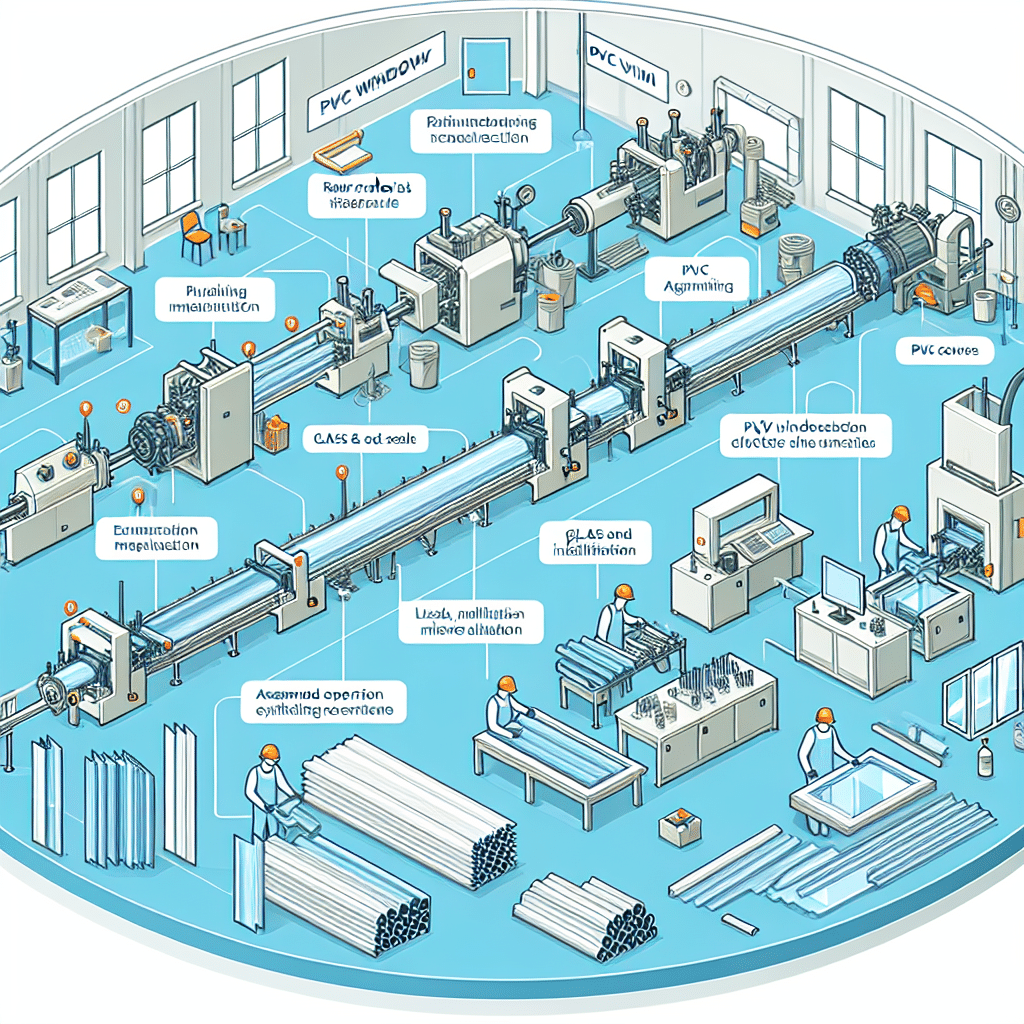Discovering the Realm of Industry: Unveiling the Secrets of the English-Speaking Industrial World
Industries have always played a crucial role in shaping the world we live in. From the Industrial Revolution in the 18th century to the technological advancements of today, the English-speaking industrial world has been at the forefront of innovation and development. In this article, we will delve into the secrets of this realm and explore the key factors that make it so successful.
1. A Strong Manufacturing Tradition
One of the defining characteristics of the English-speaking industrial world is its strong manufacturing tradition. Whether it’s automobile production, aerospace engineering, or electronics manufacturing, countries like the United States, United Kingdom, Canada, and Australia have a long history of excellence in these industries. Their commitment to quality, efficiency, and innovation has allowed them to stay competitive on a global scale.
Key Takeaway:
The English-speaking industrial world has a strong manufacturing tradition, which has contributed to its success in various industries.
2. Emphasis on Research and Development
Another key secret behind the success of the English-speaking industrial world is its emphasis on research and development (R&D). These countries allocate significant resources to R&D, enabling them to stay ahead of the curve and constantly innovate. The collaboration between universities, government agencies, and private companies fosters an environment that encourages breakthroughs and the development of cutting-edge technologies.
Key Takeaway:
The emphasis on research and development in the English-speaking industrial world drives innovation and helps maintain a competitive edge.
3. Investment in Education and Workforce Development
An often overlooked secret to the success of the English-speaking industrial world is its strong investment in education and workforce development. These countries prioritize education at all levels, ensuring a well-trained and skilled workforce. Vocational training programs, apprenticeships, and university-industry partnerships are common initiatives that prepare individuals for careers in industries such as manufacturing, engineering, and technology.
Key Takeaway:
The investment in education and workforce development in the English-speaking industrial world nurtures a qualified workforce that contributes to its ongoing success.
4. Business-friendly Environment
The English-speaking industrial world is known for its business-friendly environment, which attracts both domestic and international companies. Policies that promote entrepreneurship, low taxes, and a stable legal system create a favorable atmosphere for businesses to thrive. Additionally, the presence of world-class infrastructure and a strong support network contributes to the growth and success of industries.
Key Takeaway:
The business-friendly environment of the English-speaking industrial world attracts companies and fosters economic growth.
5. Global Trade and Economic Partnerships
Lastly, the English-speaking industrial world benefits from extensive global trade and economic partnerships. These countries actively engage in international trade, allowing them to tap into new markets and gain access to resources. Trade agreements, such as NAFTA and the newly formed CPTPP, facilitate the movement of goods and services, further strengthening the industrial sector.
Key Takeaway:
Global trade and economic partnerships contribute to the success and expansion of the English-speaking industrial world.
Conclusion: Unveiling the Secrets
The English-speaking industrial world has managed to stay at the forefront of industrial development and innovation due to a combination of factors. Its strong manufacturing tradition, emphasis on research and development, investment in education and workforce development, business-friendly environment, and global trade and economic partnerships all play a crucial role in its ongoing success. By understanding and embracing these secrets, other countries and regions can strive towards building their own thriving industrial sectors.
Pytania i odpowiedzi
Jakie są kluczowe sektory przemysłowe w anglojęzycznym świecie?
Odpowiedzić na to pytanie można poprzez wskazanie najważniejszych sektorów przemysłowych takich jak: przemysł samochodowy, przemysł technologiczny, przemysł lotniczy, przemysł chemiczny, przemysł farmaceutyczny, przemysł spożywczy, przemysł energetyczny, przemysł budowlany, przemysł metalowy, przemysł odzieżowy.
Jakie są najważniejsze miasta przemysłowe w anglojęzycznym świecie?
Odpowiedzią na to pytanie mogą być miasta takie jak: Detroit w Stanach Zjednoczonych (przemysł samochodowy), San Francisco w Stanach Zjednoczonych (przemysł technologiczny), Manchester w Wielkiej Brytanii (przemysł tekstylny), Houston w Stanach Zjednoczonych (przemysł energetyczny), Birmingham w Wielkiej Brytanii (przemysł metalowy), Sydney w Australii (przemysł lotniczy), Toronto w Kanadzie (przemysł farmaceutyczny), Chicago w Stanach Zjednoczonych (przemysł spożywczy), Houston w Stanach Zjednoczonych (przemysł chemiczny), Dallas w Stanach Zjednoczonych (przemysł budowlany).
Jak wygląda proces produkcyjny w przemyśle samochodowym w anglojęzycznym świecie?
Proces produkcyjny w przemyśle samochodowym obejmuje m.in. projektowanie i inżynierię, produkcję podzespołów, montaż i testowanie, a także logistykę i dystrybucję. Każdy etap ma swoje konkretne zadania i jest ściśle powiązany z innymi, aby zapewnić skuteczną produkcję samochodów.
Jakie są najważniejsze trendy i innowacje w przemyśle technologicznym w anglojęzycznym świecie?
Obecnie najważniejsze trendy i innowacje w przemyśle technologicznym to m.in. sztuczna inteligencja, internet rzeczy, robotyka, cyfrowa transformacja, blockchain, big data, 5G, automatyzacja, cyberbezpieczeństwo i zrównoważony rozwój. Te technologie mają ogromny wpływ na rozwój przemysłu i gospodarki w anglojęzycznym świecie.
Jakie są główne wyzwania i perspektywy w przemyśle lotniczym w anglojęzycznym świecie?
Główne wyzwania w przemyśle lotniczym obejmują m.in. zmiany przepisów i regulacji, rosnące koszty paliwa, konkurencję na rynku, innowacje technologiczne, zmieniające się preferencje klientów, a także ochronę środowiska. Perspektywą dla przemysłu lotniczego jest rozwój technologii ekologicznych, takich jak biopaliwa lotnicze i elektryczne samoloty.
Jakie są najważniejsze trendy w przemyśle chemicznym w anglojęzycznym świecie?
Najważniejsze trendy w przemyśle chemicznym to m.in. zrównoważony rozwój i ochrona środowiska, innowacje technologiczne, automatyzacja produkcji, efektywność energetyczna, cyfryzacja, rozwój biotechnologii, rosnąca rola materiałów wykorzystywanych w produkcji (np. tworzyw sztucznych), a także zmieniające się preferencje konsumentów i trendy na rynku.
Jakie są najważniejsze trendy w przemyśle farmaceutycznym w anglojęzycznym świecie?
Najważniejsze trendy w przemyśle farmaceutycznym to m.in. badania i rozwój nowych leków, produkcja leków generycznych, innowacje technologiczne, zastosowanie sztucznej inteligencji w procesach produkcyjnych i badawczych, cyfryzacja, rozwój terapii celowanej, zrównoważony rozwój i dbałość o jakość produktów, a także rynek globalny i zmieniające się preferencje pacjentów.
Jakie sektory przemysłu spożywczego są najbardziej rozwinięte w anglojęzycznym świecie?
Najbardziej rozwinięte sektory przemysłu spożywczego to m.in. produkcja napojów (alkoholowych i bezalkoholowych), przetwórstwo mięsa i ryb, produkcja żywności dla dzieci, produkcja żywności ekologicznej, produkcja słodyczy i przekąsek, produkcja mrożonek, produkcja żywności typu fast food, produkcja pieczywa i wyrobów cukierniczych, a także produkcja nabiału i przetworów mlecznych.
Jak wygląda rozwój energii odnawialnej w anglojęzycznym świecie?
Rozwój energii odnawialnej w anglojęzycznym świecie jest aktualnie priorytetem dla wielu krajów. Wprowadzane są m.in. projekty dotyczące farm wiatrowych, elektrowni słonecznych, elektrowni wodnych, a także inwestycje w technologie geotermalne i biogaz. Popyt na energię odnawialną wzrasta wraz z coraz większą świadomością ekologiczną społeczeństwa oraz dążeniem do redukcji emisji gazów cieplarnianych.
Jakie są perspektywy rozwoju infrastruktury w anglojęzycznym świecie?
Perspektywy rozwoju infrastruktury w anglojęzycznym świecie obejmują m.in. inwestycje w transport kolejowy, budowę dróg i autostrad, modernizację portów, rozwój sieci energetycznych, inwestycje w sieci telekomunikacyjne, rozbudowę lotnisk, a także inwestycje w infrastrukturę miejską i cyfrową. Rozwój infrastruktury jest niezbędny dla wzrostu gospodarczego i zapewnienia wydajności działania różnych sektorów przemysłu.




































